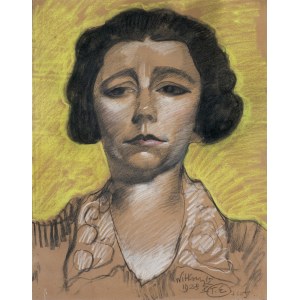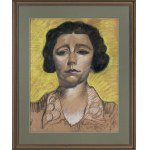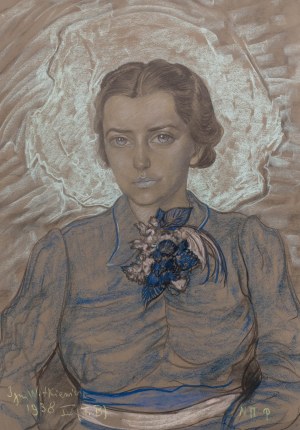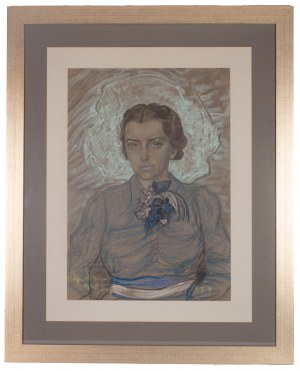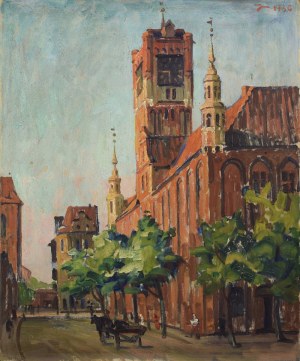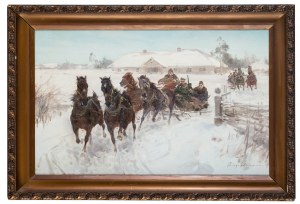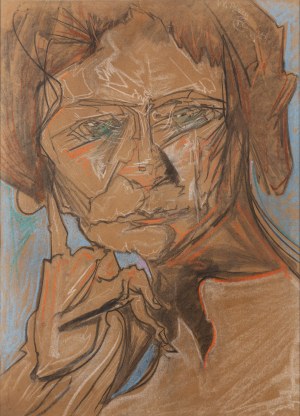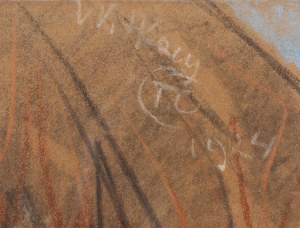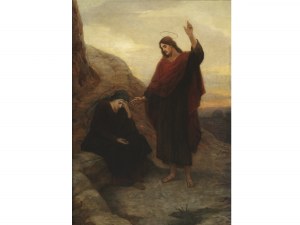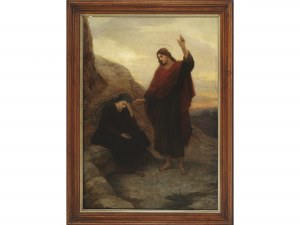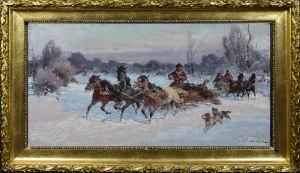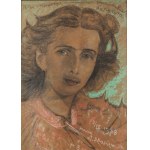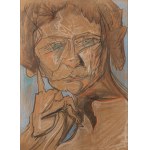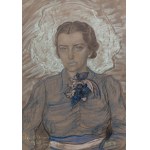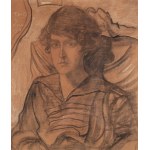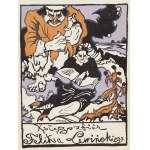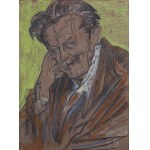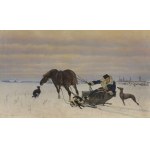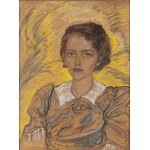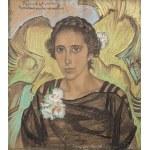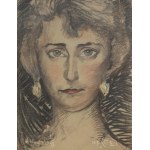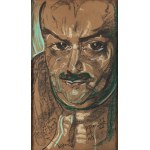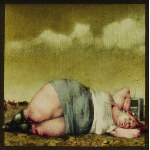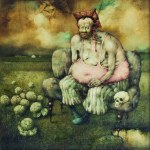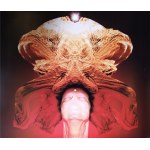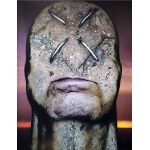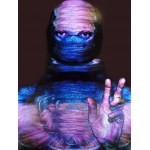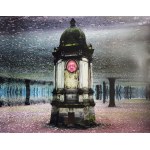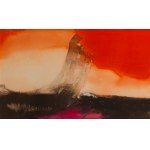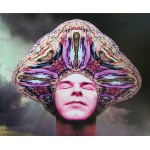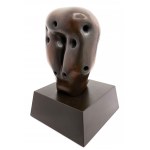62.0 x 48.5 cm - pastel, paper PORTRET JADWIGA PULICHOWEJ, FROM THE FEDOROWICZ HOUSE, 15 X 1928
pastel, brown paper, 62 x 48.5 cm (light frame)
Signed p.d.: Witkacy | 1928 | 15/X T.E [in circle] + undated
On the back l.g. auction sticker Agra-Art, 2007; p.d. on the so-called "buckle" sticker of a framing workshop in Warsaw.
The painting is accompanied by an expert's report by Dr. Anna Żakiewicz dated August 2023.
Jadwiga Pulichowa was the sister of Jozef Fedorowicz, a meteorologist from Zakopane who was friends with Witkacy and who in his spare time played in the Formist Theater founded by the artist (including Richard III in New Liberation, 1925) (...) They both participated in numerous social gatherings combined with alcohol consumption and experiments with drug use. Witkacy willingly and frequently portrayed not only Joseph, but also his entire family - mother Anna, wife Sophia, two daughters - Eugenia and Julitta, sisters Jadwiga and Maria, brother Otto and niece Irena, at least 25 portraits in all.
The portrait of Jadwiga Pulichowa, taken on October 15, 1928, is one of three of her portraits done by Witkacy. It was classified as type E, that is, it assumed "any psychological interpretation according to the company's intuition." Thus, we can assume that the model was a rather principled person and not very keen on jokes. The artist emphasized her expressive features - large dark eyes with an almond shape looking from under heavy eyelids, strongly defined black eyebrows, a slightly upturned nose, wide stubby lips and a protruding chin. The head is set firmly on an erect neck, and the face is framed by dark wavy hair styled according to the fashion of the time - parted in the middle, arranged in waves and cut below the ears. The woman is solemnly dressed in a dark dress with a large white lace collar.
Careful modeling of the face and neck with white pastel creates the effect of a sculptural portrait close in style to classical sculpture. This was, moreover, in line with the art trends of the time. In France in the 1920s, Pablo Picasso painted in this style, and in Poland, some artists from the Rhythm grouping - Eugeniusz Zak, Wacław Borowski and Ludomir Ślendzinski. Although Witkacy was an individualist, nevertheless - he was very skillful in inserting his works into current trends and using the experience of other artists in his own creative way, creating a completely new quality.
The portrait of Jadwiga Pulichowa has a uniform bright yellow background, which is superbly emphasized by the subdued black and white bust of the model on a skillfully used brown ground. The work not only demonstrates Witkacy's mastery of the art of portraiture, but also documents the artist's friendship with the Fedorowicz family, which was an important part of his life.
From the expert opinion of Dr. Anna Żakiewicz
Bibliography:
- Stanisław Ignacy Witkiewicz 1885-1939. catalog of paintings, compiled by. Irena Jakimowicz with the cooperation of Anna Żakiewicz, National Museum, Warsaw 1990, item I 850.
Stanisław Ignacy Witkiewicz (Warsaw 1885 - Jeziory, Volhynia 1939) was educated at home under his father, Stanisław Witkiewicz. In 1903 he passed his high school diploma in Lviv. In 1904 he began traveling, including to Vienna, Italy, Munich, Paris and London. From 1904 to 1910 he studied at the Academy of Fine Arts in Cracow with Prof. Jozef Mehoffer, interrupted by periods of study with Władysław Ślewiński. In 1914 he left with Bronislaw Malinowski's expedition to Australia, and from there went directly to St. Petersburg, where he enlisted in the Russian army after the outbreak of WWI. In Russia, he witnessed the Bolshevik Revolution.
After returning to the country in 1918, he became a member of the "Formists" group, with which he exhibited from 1918 to 1922. In the painting of this period, he came closest to putting into practice his own theory of Pure Form, formulated during the war (it also applied to drama). Along with Leon Chwistek, he was the main theoretician of the grouping. After 1924, he operated as a one-man "S. I. Witkiewicz Portrait Company'' making custom portraits. At the same time, he continued his literary (dramas, novels) and philosophical work, but above all he practiced the "art of living" that united all forms of his activity, appreciated only at the end of the 20th century. He committed suicide at the beginning of World War II, the day after the Soviet aggression against Poland.
Recently viewed
Please log in to see lots list
Favourites
Please log in to see lots list



